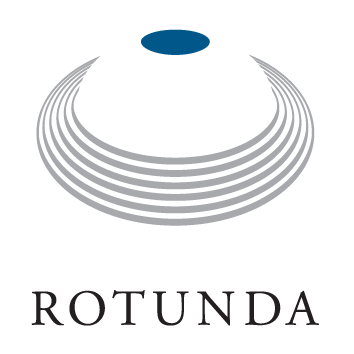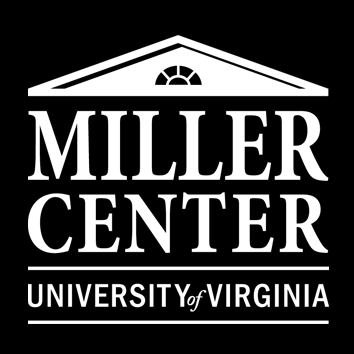Transcript
Edited by Ken Hughes, with Kieran K. Matthews and Marc J. Selverstone
As the President prepared for his 8 May 1972, speech announcing the bombing and mining of North Vietnam, he reviewed past foreign policy decisions with Treasury Secretary John B. Connally and other aides. Nixon told Connally that it was mistake for him not to retaliate militarily against North Korea after it shot down an American EC-121 reconnaissance plane in April 1969, shortly after he became President. He recalled the great popularity of his 3 November 1969, “Silent Majority” speech on Vietnam. Then Nixon revealed to Connally for the first time that in 1969 he had secretly ordered American B-52s to bomb the Ho Chi Minh Trail in the border area of Cambodia. The codename was Operation Menu, with individual rounds of bombing being named Breakfast, Lunch, Dinner, Supper and Snack. The bombing had an unintended consequence: it drove the North Vietnamese deeper into Cambodia, destabilizing the neutralist government. In April 1970, Nixon sent American troops into Cambodia in part to prevent the North Vietnamese from overthrowing its government and installing a pro-Hanoi regime.
[Tape whip] a little bit more history that’s pretty fascinating. I’ll let Henry [A. Kissinger] fill you in [on] what happened. At the time of Cambodia, I made that decision. You might tell him, Henry, that hairy session I had in the office where I had to call [William P.] Rogers and [Melvin R.] Laird in and where they—were you there, Bob?[note 1] William P. Rogers was secretary of state from January 1969 to September 1973. Melvin R. Laird was secretary of defense from January 1969 to January 1973, and counselor to the president for domestic affairs from June 1973 to February 1974.
No, I was in the [unclear].
And then the swimming pool thing, because your recollection won’t be very clear, but I want to set the record here so you’ll know that you’re not seeing a man who will desert.
[Unclear.]
Before—
Before we went through a session with Rogers and Laird, we had a week of sessions, and they opposed everything—
Everything. Everything.
—[that could] conceivably be thought of.
John, as I say, I should say this: Before we did Cambodia—this is not known to anybody—I had ordered, and we’d carried out, a series of strikes called the Menu strikes—nobody knows it—on Cambodia, on the sanctuaries, with B-52s. They were called the Menu strikes, well, because— [Kissinger attempts to interject] they were called the Breakfast strikes, and then I said, “All right, we’re going to”—so I said, “All right, that’s what”—that’s what I don’t imagine the bastards out there called them. I said, “Henry, the hell with that. A menu just isn’t breakfast; let’s have lunch and dinner, too.” So we took Breakfast, Lunch, and then we bombed the hell out of those sanctuaries. Nobody ever knew it and they didn’t say a goddamn word.
And actually, that led indirectly—
And that, incidentally, was over the violent objections of Rogers and Laird.
It led to the collapse of Cambodia because it pushed the North Vietnamese deeper into Cambodia, and as a result—
That triggered Cambodia.
That triggered the Cambodia—
Now, go ahead.
Well, we then went—then the president had about five days of sessions. He sent out an order that we do this Cambodia thing. Rogers and Laird came steaming over here.
Rogers wanted the order withdrawn on the ground that he was testifying that afternoon before Congress and he wanted to be able to say that no orders had been issued. And this is the origin of the myth that he was ignorant of the Cambodia invasion. So the president held up the order for 24 hours in order to give Rogers a clean skirt before the congressional committee. Laird said that [Ellsworth F.] Bunker and [Creighton W.] Abrams were against the Cambodian invasion.[note 2] Ellsworth F. Bunker was U.S. ambassador to South Vietnam from April 1967 to May 1973. General Creighton W. Abrams was assistant deputy chief of staff and director of operations at the Office of the Deputy Chief of Staff for Operations from 1962 to 1963, and commander of the Millitary Assistance Command in Vietnam from July 1968 to June 1972. That in any event, there’d be 1,000 casualties a week.
That’s right.
So the President asked me to backchannel Abrams and Bunker, and say he wanted their assessment. It turned out that their casualty estimate was about a tenth, and that they were both strongly for the incursion. That evening Laird sent over a—
And no misunderstanding about this, though? Laird told you that Abrams and Bunker [unclear]—
They lied to us.
I was here in that— [Unclear exchange.]
He lied to us. He totally lied.
He said, “You understand, Mr. President, that our casualties—you understand Abrams is opposed to it.”
He told us that right here. A thousand casualties a week. Remember, we had the sign up. Heck, he wanted to do Parrot’s Beak alone with the Cambodian—with the South Vietnamese along [unidentified attempts to interject] the Beak thing, and what was the other area where they—where we sent—went in and sent in— [speaking over unidentified] ?
Fishhook.
The Fishhook area. He said, “If you go in there, there’ll be 1,000 casualties a week.” OK, go ahead.
So the President ordered me to backchannel Bunker and Abrams and find out what they really thought. They both were in favor of it; they both said casualties would be around 150 a week.
Which proved to be right.
Which proved to be a little high.
[speaking simultaneously] A little bit low.
Well, it varied. It started lower and ended a little higher, but it stayed in the range of 100 to 200. Laird had even sent over a memorandum to recommend that we cancel both Parrot’s Beak and Fishhook, but recommending operations by the South Vietnamese way in the south in the delta area.
Half-assed little thing.
Which was going to be flooded two weeks later anyway because of the monsoon.
We have that on the record. [Unidentified chuckles.] And also I hope you taped that goddamn call that you made. You made a record of all these things [unclear]—
Yeah, [unclear].
Go ahead.
The next morning, when the President called in Rogers and Laird together with [John N.] Mitchell [unclear] in my absence, when they both came to the [unclear] maybe there are no [unclear] we’re going in with American troops.[note 3] John N. Mitchell served as attorney general from January 1969 to February 1972, and as Nixon Re-Election Campaign Chairman from March to July 1972. I take full responsibility. That’s how that decision was made. [Unclear] the president about that decision. I was up at Camp David to go over it with him. And this may seem ridiculous now, but to us, given all the opposition we were getting, it seemed like a really momentous decision to go into Cambodia [with] American forces. The President was saying to me, “Look, we’re going to take so much heat for this, why don’t we go whole hog and blockade Cambodia—Haiphong, too?” I thought this was more than the traffic would bear. I was wrong.
But no, no. But I agreed with you. We [unclear] yes—
Well, but that I, you know, I said I didn’t think the traffic would bear that. But what we did decide to do was to add air strikes into North Vietnam to take out their supplies that might be going in and they were quite effective. So that, more or less, is the history [President Nixon acknowledges throughout] of that particular decision, which gained us, nevertheless, two years. Without that, we would have been run out of South Vietnam two years ago.
That’s right.
And we’d be—
Also cut our casualties in half.
Cut our—
The Cambodian operation cut our casualties from 200 a week to 100 a week. Then came Laos.
The President then gave a brief account of Lamson 719, a ground offensive by the South Vietnamese army with U.S. air support that was intended to disrupt the Ho Chi Minh Trail in Laos.
Cite as
“Richard Nixon, John Connally, H. R. ‘Bob’ Haldeman, and Henry A. Kissinger on 4 May 1972,” Conversation 334-044 (PRDE Excerpt A), Presidential Recordings Digital Edition [Chasing Shadows, ed. Ken Hughes] (Charlottesville: University of Virginia Press, 2014–). URL: http://prde.upress.virginia.edu/conversations/4006729






